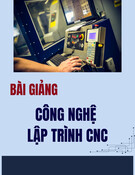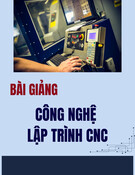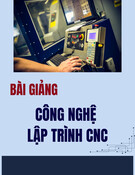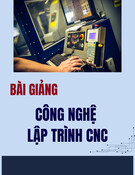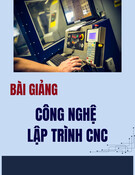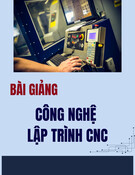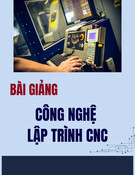Contents lists available at ScienceDirect
Computers & Industrial Engineering 79 (2015) 27–41
Computers & Industrial Engineering
j o u r n a l h o m e p a g e : w w w . e l s e v i e r . c o m / l o c a t e / c a i e
A comparative study on modelling material removal rate by ANFIS and polynomial methods in electrical discharge machining process
⇑
Khalid Al-Ghamdi, Osman Taylan
a r t i c l e
i n f o
a b s t r a c t
King Abdulaziz University, Faculty of Engineering, Department of Industrial Engineering, P.O. Box 80204, Jeddah 21589, Saudi Arabia
Article history: Received 27 April 2013 Received in revised form 26 October 2014 Accepted 29 October 2014 Available online 7 November 2014
Due to the controversy associated with modelling Electrical Discharge Machining (EDM) processes based on physical laws; this task is predominantly accomplished using empirical modelling methods. The modelling studies reported in the literature deal predominantly with quantitative parameters i.e. ones with numerical levels. In fact, modelling categorical parameters has been devoted a scant attention. This study reports the results of an EDM experiment conducted on the Ti–6Al–4V alloy. Its aim was to model the relationship between the Material Removal Rate (MRR) and the parameters of the process, namely, current, pulse on-time and pulse off-time along with a categorical factor (electrode material). The mod- elling process was accomplished using adaptive neuro-fuzzy inference system (ANFIS) and polynomial modelling approaches. In fact, one purpose of this study was to compare the performance of these mod- elling approaches as no study was found contrasting their prediction capability in the literature. Regard- ing the polynomial model, two numerical parameters (current and pulse on-time) were declared significant in the ANOVA together with the electrode material and its interaction with pulse on-time. Thus, they were all incorporated in the developed polynomial model. Furthermore, five ANFIS models with 6, 9, 19, 21 and 51 rules were developed utilizing the first order Sugeno fuzzy approach by back- propagation neural networks training algorithm. Of these, the ANFIS model with 21 rules was the best. This model also outperformed the polynomial model remarkably in terms of predicting error, residuals range and the correlation coefficient between the experimental and predicted MRR values. The study sheds light on the powerful learning capability of ANFIS models and its superiority over the conventional polynomial models in terms of modelling complex non-linear machining processes.
(cid:2) 2014 Elsevier Ltd. All rights reserved.
1. Introduction
Recent years have witnessed remarkable increase in the demand for the titanium based alloys owing to their high strength-weight ratio, excellent fracture and corrosion resistance and superior mechanical properties at elevated temperature. An extensive utilization of these alloys has been observed in the aerospace industry (Armendia, Garay, Iriarte, & Arrazola, 2010; Moiseev, 2005). Indeed, many of the aero-engine components are produced using these alloys due, in no small part, to their relatively lightweight which helps to reduce the aircraft’s overall weight thereby moderating fuel consumption (Singh & Khamba, 2007). Moreover, titanium alloys are noticeably replacing the traditionally used materials in aerospace industry such as aluminium (Lütjering & Williams, 2007). They are also used increasingly in other indus-
⇑ Corresponding author. Tel.: +966 500031056; fax: +966 26952486.
Keywords: EDM MRR Polynomial model Neuro-fuzzy model Non-conventional machining
trial and commercial applications such as, chemical processing, pollution control, surgical implantation, nuclear waste storage, food processing and petroleum refining. A major hindrance for the wider use of titanium alloys is the difficulties associated with machining them conventionally. Being chemically reactive to almost all tool materials, they tend to weld the cutting tools while machining thereby accelerating tool failure (Hartung, Kramer, & Von Turkovich, 1982). The damage to cutting tools is compounded by the fact that the heat generated at the tool-work-piece interface while machining is concentrated at the tool’s cutting edges. This heat cannot be transferred through the work-piece due to the poor thermal conductivity of titanium alloys. Moreover, a very high mechanical stress is accumulated on the immediate vicinity of the cutting edge as a result of high strength and hardness that these alloys retain at elevated temperature poses a further imped- iment to their machine-ability (Che-Haron & Jawaid, 2005; Trent & Wright, 2000). Ezugwu and Wang (1997) asserted that it was due to the limitations associated with machining these alloys that large companies such as Rolls-Royce and General Electric invested large
E-mail addresses: kaaalghamdi@kau.edu.sa (K. Al-Ghamdi), otaylan@kau.edu.sa (O. Taylan).
http://dx.doi.org/10.1016/j.cie.2014.10.023 0360-8352/(cid:2) 2014 Elsevier Ltd. All rights reserved.
formed the examined ANN techniques in predicting the perfor- mance measures whereas comparable performance of the two approaches was reported by (Pradhan & Biswas, 2010).
sums of money in developing techniques to deal with them. Ezugwu, Bonney, Da Silva, and Cakir (2007) argued that, despite these limitations, machining will remain the favoured option for manufacturing complex titanium alloys at a competitive cost in the foreseeable future.
Some gaps were noted in the current literature on modelling die-sinking EDM process. First, while some of the studies com- pared the performance of ANN with that of ANFIS, none of them contrasted the prediction capability of polynomial models with that of ANFIS. This paper attempts to fill this void by comparing the performance of a polynomial model with a Neuro-Fuzzy model derived based on different number of rules and fuzzy inference systems. Second, the parameters examined in pub- lished modelling studies were, by and large, quantitative i.e. their levels were numerical. In fact, scant attention has been accorded to the case of correlating qualitative (categorical) parameters with the key performance measures of EDM, partic- ularly when polynomial modelling was adopted. In this study, the relationship between three numerical parameters along with a categorical one and MRR was modelled using a polynomial function as well as a Neuro-Fuzzy system. The implications of incorporating a qualitative factor and the way in which it was dealt with are elaborated on. Third, in the context of machining Ti–6Al–4V, Caydas and Hascalik (2008) appears to be the only study that addressed the modelling of the EDM process of this alloy. The present work extends that of Caydas and Hascalik (2008) in two aspects. First, while Caydas and Hascalik (2008) examined the influence of three parameters; namely, pulse on- time, pulse off-time and current on the electrode wear and recast thickness, the current research assessed the impact of the same three parameters (at different levels) along with the effect of electrode material on the MRR, which was not examined in the above mentioned study. Second, although the response sur- face method was the only modelling approach adopted in Caydas and Hascalik (2008), this paper utilizes and compares the perfor- mance of two methods; namely, polynomial modelling and ANFIS, bearing in mind that, to date, the latter has not been applied to model the die-sinking EDM of Ti–6Al–4V.
Non-conventional machining processes provide effective alter- natives to the conventional ones in dealing with the technical dif- ficulties associated with machining titanium alloys. Of these, Electrical Discharge Machining (EDM) is the most widely known and used process for the manufacture of engineering components (Aspinwall, Soo, Berrisford, & Walder, 2008). In this process, the material removal takes place as a result of the discharge of energy between a tool and a work-piece, which are separated by a small gap filled with a dielectric fluid. The process involves a succession of discrete discharge pulses initiated using a DC pulse generator for a certain duration followed by a similar period during which deion- isation of the dielectric occurs and the gap is flushed of debris (McGeough, 1988). A very high temperature is generated by the discharge energy at the point of the spark on the work-piece and the material is removed by melting and vaporization. The stability of the process is maintained by a servo-controlled mechanism whereby a constant gap between the tool and the work-piece is sustained whilst impressing the former pre-selected shape (Singh, Maheshwari, & Pandey, 2004). The EDM theory was postu- lated by two Soviet scientists in the middle of 1940s (Ho & Newman, 2003). Its process is very effective in machining materi- als of any hardness given that they conduct electricity (Abbas, Solomon, & Bahari, 2007; Yan, Chung, & Yuan Huang, 2005). A major advantage of the EDM process is its electro-thermal nature which eliminates the need for any direct contact between the elec- trode and work-piece during machining thereby eradicating the mechanical stress, chatter, tool deformation and vibration prob- lems (Tsai & Masuzawa, 2004). A recent review of titanium alloys EDM is reported in (Kumar, Singh, Batish, & Singh, 2012). The scope of the current work is centred on the EDM of the Ti–6Al–4V alloy, which accounts for 50–60% of total titanium alloy production (Hood, Lechner, Aspinwall, & Voice, 2007).
The methods adopted in the current study are firstly described. A discussion of the experimental design and procedures follows. The obtained results are then presented and discussed. After com- paring the performance of the investigated modelling approaches, the paper culminates with the main conclusions.
2. Methodology
Material Removal Rate (MRR) is one of the key performance measures in EDM. The ability to rigorously understand its mecha- nism and accurately predict its values based on the well-known physical laws are still debatable (Markopoulos, Manolakos, & Vaxevanidis, 2008; Tsai & Wang, 2001a). In fact, the large number of parameters involved and their interdependence together with the stochastic mechanism of the EDM process appear to signifi- cantly impair the ability to establish a scientifically admissible theory correlating the process variables with the main perfor- mance measures such as the MRR. Consequently, this task is predominantly accomplished by means of empirical or semi- empirical modelling methods. Broadly, two approaches are adopted; namely, the use of conventional statistical models and the application of soft computing algorithm such as ANFIS. For instance, the second order (quadratic) polynomials, conventionally employed in response surface method, were used to relate the EDM process parameters with its key performance measures in the case of machining cobalt-bonded tungsten carbide (Puertas, Luis, & Alvarez, 2004), silicon carbide (Luis, Puertas, & Villa, 2005), Al–4Cu–6Si alloy–10 wt.% SiCP composites (Dhar, Purohit, Saini, Sharma, & Kumar, 2007) and DIN 1.2714 steel (Zarepour, Tehrani, Karimi, & Amini, 2007). Artificial neural network (ANN) techniques, on the other hand, were used to model and predict the main EDM performance characteristics in the case of machin- ing aluminium and iron (Tsai & Wang, 2001b) and various steel grades (Panda & Bhoi, 2005; Pradhan & Biswas, 2010). The perfor- mance of ANN was compared with that of the ANFIS in two studies. In one of these (Puertas et al., 2004), the ANFIS method outper-
Design of Experiments (DoE) is an effective and efficient approach for exploring, understanding and empirically modelling the cause-and-effect relationship between the engineering pro- cesses’ parameters and their performance measures. An experi- mental investigation involves purposeful changes of the input variables of a process or system to explore and justify the changes that may occur in the output response (Montgomery, 2010). Generally a DOE study is performed in three stages: plan ning, conducting and analysis and interpretation (Antony, 2003). The planning stage involves recognizing the problem or the improve- ment opportunity, stating the objectives, selecting the perfor- mance measure(s) and the measurement system(s), determining the factors that may influence the chosen performance measure(s), choosing the levels for the factors, finding an appropriate design to vary the factor levels in accordance with and assigning the factors and interactions to the selected design. Having accomplished these tasks, the next stage is to carry out the experiment as planned. Finally, the obtained results should be analyzed and interpreted. In so doing, two approaches were adopted in this study; namely, the polynomial modelling approach and the ANFIS.
28 K. Al-Ghamdi, O. Taylan / Computers & Industrial Engineering 79 (2015) 27–41
2.1. Polynomial modelling approach
(Puertas et al., 2004; Luis et al., 2005; Dhar et al., 2007; Zarepour et al., 2007). For ‘m’ factors, a model of this order comprises (m + 1)(m + 2)/2 terms and takes the form that is given in Eq. (2):
m X
m X
m X
ð2Þ
^y ¼ ^b0 þ
^bixi þ
^biix2
^bijxixj
i þ
i i¼1 i¼1 Polynomial modelling is a major phase of the statistical analysis
of experimental data which comprises four stages: estimation,
hypothesis testing, modelling and identifying the best parameters
setting. The estimation involves obtaining a number to quantify
the impact of each of the studied parameters and their interactions
on the investigated performance measure(s). To accomplish this
task in the current study, a measure that was initially proposed
by Kelley (1935) and labelled the Percentage Contribution (PC)
by Ross (1996) was adopted. This was obtained using Eq. (1). PC ¼ (cid:3) 100 ð1Þ SSP (cid:2) ðdfpÞMSE
SStotal where ^b0 is the intercept, ^bi is the coefficient of the linear effect of
factor i, ^bii is the coefficient of the quadratic effect of factor i and ^bij
is the coefficient of the interaction effect between factors i and j.
Having developed an appropriate empirical model for the process
under study, the next step is to identify the best combination of
the parameters values. This task can be accomplished using such
graphical tools as main effects and interactions plots. Alternatively,
formal optimization techniques such as linear and non-linear pro-
gramming (Taha, 2010) may be employed using the developed
empirical model as an objective function to be maximized or mini-
mized as appropriate. 2.2. Adaptive neuro-fuzzy inference system (ANFIS) for EDM processes Fuzzy systems and ANNs are two of the major soft computing
approaches. The relationship between neural networks and linguis-
tic knowledge based system is bidirectional and broadly discussed
in (Ishibuchi, Nii, & Turksen, 1998). Neural network-based systems
can be trained by numerical data and fuzzy rules can be extracted.
On the other hand, fuzzy rule-based systems can be designed and
developed by linguistic knowledge. Normally, the fuzzy logic and
neural systems have very contrasting applications. For instance,
fuzzy systems are appropriate if sufficient expert knowledge about
the process is available, while neural systems are useful if sufficient
measurable data of process are available (Taylan & Karagözog˘lu,
2009). Both approaches build nonlinear systems based on bounded
continuous variables. However, they are different in the sense that
neural systems are treated in a numerical quantitative manner,
whereas fuzzy systems are treated in a symbolic qualitative man-
ner. In this study, a class of adaptive neuro-fuzzy networks with
the ultimate aim of designing a Fuzzy Inference System (FIS) via
learning is proposed. The network structure and learning algorithm
imply a systematic approach for the FIS design. where SSp is the parameter’s Sum of Squares, dfp is its degrees of
freedom and the MSE is the mean square error of the experiment.
The PC gives the percentage each parameter contributes to the
total performance measure’s variation, and is a measure of how
much the performance could be improved if the parameter was
controlled accurately. The quantities required for estimating the
PC can be obtained from the Analysis of Variance (ANOVA) which
is the main technique for accomplishing the hypothesis testing
task (the process through which the statistical significance of each
of the examined parameter and interaction is tested). The ANOVA
involves decomposing the observed total variance into compo-
nents due to different sources of variation (factors, interactions
and experimental error). Dividing the estimated variance for each
parameter by that of error lends a random variable that follows
an F-distribution and can be used to test the statistical significance
of the concerned parameter. However, when the experiment is not
replicated, there will be no degrees of freedom to estimate the
error variance. In such cases, it is necessary to identify the factors
or interactions that can reasonably be pooled to provide an esti-
mate of the error variance. A powerful tool for accomplishing this
task is the Half Normal probability Plot (HNP) (Daniel, 1959) of
which the use is conventionally confined to analyzing unreplicated
two-level experiments. Essentially, HNP can be constructed for any
design provided that the plotted effect estimates are uncorrelated
and have the same variance. For three-level designs, Wu and
Hamada (2011) showed how HNP can be used in the case of
decomposing the studied factors into single degree of freedom
components with equal variance. Whitcomb and Oehlert (2007)
proposed an alternative strategy for using the HNP that relaxed
the condition of splitting the effects into single degree of freedom
elements. In this strategy, the sums of squares are used as alterna-
tive measures of the factorial effects which are commonly esti-
mated using the contrasts among the averages of response values
associated with the levels of the studied factors. Furthermore, an
iterative method that bears considerable resemblance with the
stepwise variable selection procedure is adopted to estimate a pro-
visional error variance. Dividing the sum of squares of a selected
effect by this estimate renders a chi-square statistic for which a
provisional p-value can be computed and translated in terms of a
provisional z-score of a Half Normal distribution. The factors and interactions that pronounced significant in the
ANOVA are used to develop an empirical model correlating them
with the response under study (Wu & Hamada, 2011). An adaptive network is a neuro-fuzzy system with an overall
input–output behaviour that is determined by the collection of
modifiable parameters. The structure of an adaptive network is
composed of nodes connected by directed links, where each node
performs a function on its incoming signals to generate a signal
to the output node and each link specifies the direction of signal
flow from one node to another (Jang, Sun, & Mizutani, 1997). The
network structure encodes fuzzy ‘If-then’ rules’ in which the conse-
quent outcome is a function of the input variables. Fuzzy sets are
considered to be advantageous in the logical field, and in handling
higher order operations easily. The basic advantage of the ANFIS is
the addressing of fuzzy linguistic parameters and their term sets
that must be identified by the designer. In general, the designer
chooses the types of membership functions (MFs). The number of
membership functions for each input space might be a drawback
for an ANFIS design besides the parametric learning and structure
learning problems dealing with the partition on the input–output
universes (Taylan & Darrab, 2011). In order to overcome the draw-
back of ANFIS for the rule generation, the fuzzy sub-clustering
approach is generally used. In this method, rules are generated
based on the clustering of input and output data set. The number
of rules is usually equal to the number of output clusters regardless
of the number of input variables. Each data point is regarded as a
potential cluster centre and a measure of likelihood defining the
cluster centre based on the density of surrounding data points is
calculated. In order to generate an ANFIS structure, a cluster radius Polynomials are very powerful for empirically modelling the
cause-and-effect relationship between the process parameters
(X1, X2..Xm) and the performance measure of interest (Yi). Mathe-
matically, this relationship is developed using Taylor series expan-
sion of terms involving the studied factors and interactions.
Generally, a polynomial model is said to be of order ‘N’ if this is
the power of one or more of its factor terms or if ‘N’ is the sum
of the powers of the factors involved in one of its interaction terms.
Polynomials of second order are commonly used in modelling EDM 29 K. Al-Ghamdi, O. Taylan / Computers & Industrial Engineering 79 (2015) 27–41 error term ei was defined, as the derivative of the error measure Ep
with respect to the output of node i and it is given in Eq. (6). ð6Þ ei ¼ @þEp
@xi Then the weight update wki for on-line learning is calculated by Eq. (7). ð7Þ ¼ (cid:2)g Dwki ¼ (cid:2)g ¼ (cid:2)geixk @þEp
@xi @þEp
@wki @xi
@wki must be specified to indicate the range of influence of the cluster.
In this approach, specifying a small cluster radius will yield many
small clusters in the data set, and will produce too many rules.
Hence, the number of MFs will be high and the optimality of
outcomes will be lower. To improve the performance of a fuzzy
system, the parameters in terms of the structure, complexity, type
of networks, etc., have to be determined and tuned (Taylan &
Darrab, 2011). On the other hand, an ANFIS model is able to pro-
duce crisp numerical outcomes. It includes the following steps:
(1) defining input and output variables by linguistic statements,
(2) deciding on the fuzzy partition of the input and output spaces,
(3) choosing the MFs for the input and output linguistic variables,
(4) deciding on the fuzzy control rules, (5) designing the inference
mechanism and (6) choosing a de-fuzzification procedure. where g is the learning rate that affects the convergence speed and
stability of the weights during learning. For off-line learning, the
connection weight wki is updated only after the presentation of
entire data set or after the specified epochs are completed as given
in Eq. (8). 2.2.1. ANFIS model development by BP MLP ð8Þ Dwij ¼ (cid:2)g ; Dwki ¼ (cid:2)g @þEp
@wij @þEp
@wki This corresponds to a way of using the true gradient direction based on the entire data set. The aim of this study is to model the relationship between the
MRR and the input parameters of the examined EDM process,
namely, current, pulse on-time, pulse off-time and electrode mate-
rial. As the modelling task will be accomplished using adaptive
neuro-fuzzy inference system (ANFIS) and polynomial modelling,
another purpose of the study is to compare the performance of
these modelling approaches taking in consideration the presence
of a qualitative factor; namely, the electrode material. 3. Experimental design and procedures The Back-Propagation (BP) Multilayer Perceptrons (MLP) is an
adaptive network whose nodes perform the same function on
incoming signals; this node function is usually a composite of
weighted sum and it is a differentiable nonlinear activation func-
tion. The most commonly used activation functions in BP MLPs
are logistic, hyperbolic tangent, and identity functions. The first
two functions provide smooth, nonzero derivatives with respect
to input signals. Sometimes they are referred to as squashing func-
tions since the inputs to these functions are squashed to the range
[0,1] or [(cid:2)1,1]. On the other hand, they are also called sigmoidal
functions because of their S-shaped curves that exhibit smoothness
and asymptotic properties. For an ANN, the node function for the
output layer is considered to be a weighted sum of squashing
functions. This is equivalent to a situation in which the activation
function is an identity function, and output nodes of this type are
often called linear nodes. The net input x of a node is defined as
the weighted sum of the incoming signals plus a bias term. For
instance, the net input and output of node j are calculated by Eq.
(3). and Eq. (4), respectively. 36
X ð3Þ Net xj ¼ wijxi þ wj i¼1 ð4Þ xj ¼ f ðxjÞ ¼ 1
1 þ expð(cid:2)xjÞ In performing the experiment, an ONA D-2030-S Die sinking
EDM machine with programmable pulse current and on/off time
was used. Kerosene was used as dielectric and was supplied to
the electrode/work-piece interface using two adjustable nozzles
at a flow rate of 2 litres/minute. As already pointed out, the
work-piece material was the Ti–6Al–4V alloy of which detailed
properties are presented in (Ezugwu & Wang, 1997). This was sup-
plied in bars which were cut into 15 mm long cylindrical discs each
with a diameter of 20 mm. Regarding the electrode, each material
type was also provided in bars and was cut into cylindrical discs
each with 50 mm length of 12 mm diameter. For each experiment,
new electrode was used so that the wear associated with the pre-
ceding run exerts no effect on the following ones. This also helped
ensure that all the experiments start at the same electrode
conditions. where xi is the output of node i located in any one of the previous
layers, wij is the weight associated with the link connecting nodes
i and j, and wj is the bias of node j. Since the weights wij are actually
internal parameters associated with each node j, changing the
weights of a node will alter the behaviour of the node and in turn
alter the behaviour of whole BP algorithm. In this study, a BP
algorithm forming the steepest descent method for MF estimation
was employed. The training error is the difference between the training data
output value, and the output of the fuzzy inference system
corresponding to the input training data value. The training error
records the mean squared error (MSE) of the training data set at
each epoch. The backward error propagation is calculated by the
following steps; first, a squared error measure for the pth input–
output pair is defined by Eq. (5). X ð5Þ Ep ¼ ðdk (cid:2) xkÞ2 k For the EDM process of Ti–6Al–4V, Caydas and Hascalik (2008)
conducted an experimental study aiming to develop an empirical
model to correlate pulse on-time, pulse off-time and current with
electrode wear and recast thickness. A further parameter; namely,
electrode material was examined in this study and its influence
together with that of the aforementioned three parameters on
the MRR was investigated. Three levels were chosen for each of
the studied parameters as detailed in Table 1. A full factorial
three-level experiment comprising 34 = 81 runs was conducted.
Consequently, there were 80 degrees of freedom to estimate all
the investigated factorial effects. Based on the effect of sparsity
principle, it was deemed very unlikely that all of these 80 effect
components are significant i.e. the process is likely to be driven
primarily by only some of the parameters’ main effects and
interactions. On this premise, the variability associated with the
insignificant effects was attributed to the experimental error and
hence was utilized to estimate its variance. By so doing, it was pos-
sible to analyze the experimental data without replicating its runs
which would have entailed performing a prohibitive number of where dk is the desired output and xk is the actual output for the
node k when the input part of the pth data pair was presented. To
minimize the error measure, firstly the gradient vector was
obtained. In order to calculate the gradient vector, a form of deriv-
ative beginning from the output layer was identified which is going
backward layer by layer until the input layer is reached. Hence, an 30 K. Al-Ghamdi, O. Taylan / Computers & Industrial Engineering 79 (2015) 27–41 31 K. Al-Ghamdi, O. Taylan / Computers & Industrial Engineering 79 (2015) 27–41 Table 1
Machining parameters of the Ti–6Al–4V EDM experiment. Variable parameters Levels 1 2 3 irrespective of the pulse on-time, the highest MRR was observed
with the graphite electrode. Moreover, for all of the three electrode
materials, the MRR increased when the on-time increased from
100 to 150 ls. However, when pulse on-time was changed from
150 to 200, MRR decreased with different rates depending on the
electrode material. While a comparable decrease rates were noted
with graphite and copper, the least reduction rate was observed
with the aluminium electrode. In fact, with long pulse on-time per-
iod (>150 ls), arcing was observed with all of the electrode mate-
rials. Consequently, the discharge efficiency was compromised
rendering a noticeable decrease in MRR. A
B
C
D Pulse current (A)
Pulse off-time (ls)
Pulse on-time (ls)
Electrode material 5
50
100
Graphite 10
75
150
Copper 15
100
200
Aluminium Fixed parameters Level trials (at least 162). The adoption of principal of sparsity is not
uncommon in the experimental design literature (Montgomery,
2010).
Its validity has been empirically demonstrated by Li,
Sudarsanam, and Frey (2006) and Bergquist, Vanhatalo, and
Nordenvaad (2011). A polynomial model was used to represent the relationship
between the parameters and the interaction that were declared
significant in the ANOVA and the MRR. As a categorical factor,
one way of dealing with the electrode material is to develop a sep-
arate model consisting only of the quantitative factors for each of
its levels rendering three separate models. This approach was
adopted by (Sahoo, Routara, & Bandyopadhyay, 2009) in examining
the impact of different work-piece materials. Helpful though in
terms of avoiding explicit modelling of categorical factors, this
approach becomes quite cumbersome as the number of these
factors and their levels increases. In fact, explicit modelling of
categorical factors has the advantage of being more practical as it
yields a single predication equation. Moreover, it renders one esti-
mate of the experimental error variance and more residual degrees
of freedom than fitting several regression models. Therefore, this
approach was adopted in this study. In each of the performed 81 experiments, the work-piece was
machined for a fixed period of time i.e. 15 min using a positive
electrode polarity. The order in which the experiments were
conducted was randomly determined. The main reason for select-
ing a full factorial design factorial design despite its large size was
the need to provide enough experimental data to train the devel-
oped ANFIS model. The performance measure of interest in the
current work was the work-piece MRR. This was measured by
recoding the work-piece weight before and after the EDM opera-
tion using a micro-level balance; the volume of the material
removed was then obtained by dividing the weight differences
by the Ti–6Al–4V density. The ratio of the removed material
volume to the machining time rendered the MRR (mm3/min). 4. Results and discussion The results of the experiment are given in Table 2. Their analysis
using the two investigated approaches will be presented and dis-
cussed separately. The prediction capabilities of the developed
polynomial and ANFIS models will then be assessed and compared. 4.1. Polynomial modelling approach The HNP of the MRR was constructed as shown in Fig. 1. Clearly,
pulse current (A), its on-time (C), electrode material (D) and the
interaction of pulse on-time and electrode material (CD) stand
out as potentially significant. To test their statistical significance,
ANOVA was used as displayed in Table 3. Evidently, all of the
examined effects are significant because their p-value being smal-
ler than a = 0.05. Electrode material was the most influential parameter as it
accounted for 60.86% of the MRR variability. Pulse on-time had a
higher PC (19.43%) than its interaction with electrode material,
which explained 9.12% of the variability. Having a PC value of
4.57%, pulse current was the least influential among the significant
parameters. Collectively, the considered factorial effects explained
93.98% (60.86 + 19.43 + 9.12 + 4.57) of the MRR variability render-
ing an error PC of 6.02% (100–93.98). To model the process under study, a model matrix was con-
structed from the design array given in Table 2. This is a coded
matrix that has a column for each term in the model to be devel-
oped. As three main effects and one interaction of three-level fac-
tors were found significant, ten terms were needed. Of these four
corresponded to the linear and quadratic components of the two
quantitative factors: pulse on-time and current. The qualitative
factor (electrode material) has two terms associated with its two
degrees of freedom. Finally, the interaction between the electrode
material and pulse on-time has four terms corresponding to the
four possible combinations of the linear and quadratic elements
of pulse on-time and the two components of the electrode mate-
rial. To construct the model matrix, it was necessary to code the
levels of the studied parameters so that they become dimension-
less and can be used to estimate comparable model coefficients.
Coding also improves the precision with which the coefficients
are estimated (Montgomery, 2010). Linear main effects of the
quantitative parameters were coded so that the highest and lowest
levels of each factors become 1 and (cid:2)1 respectively. Any value in
between can be calculated so that its difference from 1 and (cid:2)1 is
proportional to the difference between the corresponding actual
value and the actual highest and lowest values. The codes for the
quadratic main effect can then be obtained by squaring the coded
linear main effect levels. Using this system, a least squares linear
main effect coefficient is interpreted as the average change in the
response variable per unit change in its factor. The quadratic main
effect coefficient, on the other hand, is a measure of how its factor
changes when its own values are changed. The components of the
electrode material factor can be coded by assigning one dummy
variable for each of the three electrode types. For each variable, a
value of one can be assigned to the runs where the appropriate
electrode material was used while a value of zero should be writ-
ten for the remaining runs. This entails adding three dummy vari-
able columns of which the row-wise sum is one, rendering a
column identical to the one that should be used to estimate the
model intercept. Consequently, it will not be possible to estimate
any of the model coefficients as the model matrix will be singular.
One way out of this problem is to drop one of the three dummy
variables, in which case, each of the coefficients of the remaining Fig. 2(a) depicts the plot of the main effect of current on MRR.
Evidently, the MRR increased linearly when the pulse current
increased. This is due to the increase in the discharge energy that
accompanied the rise of current, which caused an increase in the
molten metal volume. With regards to pulse on-time and electrode
material, their main effect plots should not be relied upon owing to
their interdependence which resulted in subtler patterns of MRR as
can be seen from Fig. 2(b). This interaction plot shows that Dielectric
Machining time (min)
Dielectric flow rate (l/min) Kerosene
15
2 32 K. Al-Ghamdi, O. Taylan / Computers & Industrial Engineering 79 (2015) 27–41 Table 2
Results of the performed EDM experiment. No. Current Off time On time Electrode No. Current Off time On time Electrode MRR MRR 42
43
44
45
46
47
48
49
50
51
52
53
54
55
56
57
58
59
60
61
62
63
64
65
66
67
68
69
70
71
72
73
74
75
76
77
78
79
80
81 15
5
10
15
5
10
15
5
10
15
5
10
15
5
10
15
5
10
15
5
10
15
5
10
15
5
10
15
5
10
15
5
10
15
5
10
15
5
10
15 75
100
100
100
50
50
50
75
75
75
100
100
100
50
50
50
75
75
75
100
100
100
50
50
50
75
75
75
100
100
100
50
50
50
75
75
75
100
100
100 150
150
150
150
200
200
200
200
200
200
200
200
200
100
100
100
100
100
100
100
100
100
150
150
150
150
150
150
150
150
150
200
200
200
200
200
200
200
200
200 Copper
Copper
Copper
Copper
Copper
Copper
Copper
Copper
Copper
Copper
Copper
Copper
Copper
Aluminium
Aluminium
Aluminium
Aluminium
Aluminium
Aluminium
Aluminium
Aluminium
Aluminium
Aluminium
Aluminium
Aluminium
Aluminium
Aluminium
Aluminium
Aluminium
Aluminium
Aluminium
Aluminium
Aluminium
Aluminium
Aluminium
Aluminium
Aluminium
Aluminium
Aluminium
Aluminium 15.59
14.75
17.48
19.31
2.25
1.44
8.17
2.03
5.96
4.28
0.91
4.22
5.85
3.75
9
8.35
6.51
8.49
9.04
2.69
4.9
6.37
11.65
19.88
26.04
16.28
11.64
23.49
16.46
12.66
19.06
7.18
14.46
15.96
14.77
13.57
16.89
12.68
17.06
12.04 1
2
3
4
5
6
7
8
9
10
11
12
13
14
15
16
17
18
19
20
21
22
23
24
25
26
27
28
29
30
31
32
33
34
35
36
37
38
39
40
41 5
10
15
5
10
15
5
10
15
5
10
15
5
10
15
5
10
15
5
10
15
5
10
15
5
10
15
5
10
15
5
10
15
5
10
15
5
10
15
5
10 50
50
50
75
75
75
100
100
100
50
50
50
75
75
75
100
100
100
50
50
50
75
75
75
100
100
100
50
50
50
75
75
75
100
100
100
50
50
50
75
75 100
100
100
100
100
100
100
100
100
150
150
150
150
150
150
150
150
150
200
200
200
200
200
200
200
200
200
100
100
100
100
100
100
100
100
100
150
150
150
150
150 Graphite
Graphite
Graphite
Graphite
Graphite
Graphite
Graphite
Graphite
Graphite
Graphite
Graphite
Graphite
Graphite
Graphite
Graphite
Graphite
Graphite
Graphite
Graphite
Graphite
Graphite
Graphite
Graphite
Graphite
Graphite
Graphite
Graphite
Copper
Copper
Copper
Copper
Copper
Copper
Copper
Copper
Copper
Copper
Copper
Copper
Copper
Copper 17.21
24.7
23.1
16.45
25.2
31.12
21.39
23.45
30.3
33.69
39.41
36.84
33.73
36.82
38.95
33.31
35.84
38.19
24.75
24.75
30.69
18.69
18.16
27.31
24.14
26.18
27.7
10.27
11.86
17.27
12.5
12.53
16.18
11.68
15.11
11.93
13.9
17.82
19.5
16.76
16.09 Table 3
ANOVA for MRR. Source Sum of squares df Mean square F-value p-value PC (%) 26.56
112.98
353.87
26.50 <0.0001
<0.0001
<0.0001
<0.0001 4.57
19.43
60.86
9.12 179.28
762.68
2388.76
178.91
6.75 A
C
D
CD
Residual
Total 358.56
1525.35
4777.52
715.66
472.52
7849.61 2
2
2
4
70
80 levels. This system was adopted in this paper for it yields polyno-
mial coefficients equivalent to the effect estimates conventionally
computed in ANOVA analysis in the cases where the model matrix
is orthogonal. To illustrate this, let YG; YC and YA denote respec-
tively the average response values associated with the levels
graphite, cooper and aluminium of the electrode material and let
Y00 be the overall average. For the two components of the electrode
material, two main effect coefficients ^bD1 and ^bD2 will be estimated.
The former is equal to YG (cid:2) Y00 whereas the latter is equal to
YC (cid:2) Y00. Although it is not included in the model, the effect asso-
ciated with the third level i.e. aluminium (^bD3) can be obtained
from the other two coefficients. In fact, its value equal the sum
of two estimated coefficients multiplied by (cid:2)1 i.e. ^bD3 ¼ (cid:2)^bD1þ
^bD2). As it can be seen from the three curves in Fig. 2(b), the MRR
has a quadratic behaviour when varied across the values of pulse two variables will estimate the net contribution or consequence of
its corresponding level relative to the excluded one. Alternatively,
two columns can be used to represent the two components of the
electrode material factor. The first can be formed by associating 1,
0 and (cid:2)1 with the levels graphite, cooper and aluminium respec-
tively while the second may be constructed by assigning 0, 1 and
(cid:2)1 respectively to the graphite, cooper and aluminium electrode Fig. 1. HNP of the MRR. 33 K. Al-Ghamdi, O. Taylan / Computers & Industrial Engineering 79 (2015) 27–41 the independence assumption, the violations of the assumption
of constant variance can be detected by plotting residuals against
fitted values as it is given in Fig. 3 (b). on-time. This behaviour is dependent upon the electrode material.
Put differently, the curvilinear effect of pulse on-time with graph-
ite electrode differs from that exhibited with cooper and alumin-
ium electrodes. To account for this, the model matrix must
incorporate interaction columns. These can be generated using
the entry-wise multiplications of the component columns of pulse
on-time and electrode material factors. The least square estimates
of these interactions serve as adjusting values for the terms in the
quadratic equation that represents the behaviour of the MRR over
the studied range of pulse on-time for each of the examined elec-
trodes. Using the coding scheme described above, the fitted model
for MRR is presented by Eq. (9). MRR ¼ 23:5 þ 2:58XA þ 0:047X2A (cid:2) 0:171XC (cid:2) 9:20X2C ð9Þ þ 12:8XD1 (cid:2) 6:72XD2 þ 0:7XCXD1 (cid:2) 4:51XCXD2
(cid:2) 2:93X2CXD1 þ 0:981X2CXD2 As no unusual pattern was recognized in any of the residual
plots, the ANOVA results were dammed satisfactory. To assess
the model coefficients sensitivity to each of the response values,
Cook (1979) suggested a measure, conventionally denoted by Di,
which quantify the square difference between the least squares
estimates based on all the 81 response values and those obtained
by deleting the ith response value. Any response value with
Di > 1 is deemed influential. For the developed model, the maxi-
mum Di was 0.129 indicating the robustness of its coefficients to
small changes in the response values. Another measure of the
model quality is the R2-adjusted which estimates the percentage
of the variability explained by the model. This was found to be
93.17% implying that only 6.83% of the total variability in MRR
was left unexplained. The predictive capability of the model can
also be assessed using the prediction R2 which can be computed
as it is given in Eq. (11). ð11Þ R2
prediction ¼ 1 (cid:2) ðPRESS=SStotalÞ ANOVA was used to test the statistical significance of the terms
that the above model incorporates as it is displayed in Table 4.
Clearly, the terms XC, X2A, XCXD1 and X2CXD2 are not significant
at a = 0.05 level and thus they should be pooled with the error esti-
mate and deleted from the developed model to yield the model
presented in Eq (10). MRR ¼ 23:5 þ 2:58XA (cid:2) 9:20X2C þ 12:5XD1 (cid:2) 6:07XD2 ð10Þ (cid:2) 4:16XCXD2 (cid:2) 2:44X2CXD1 where PRESS is the predictive residual sum of squares (Pe(i)) and
e(i) = yi (cid:2) ^yðiÞ. The ^yðiÞ is the predicted value of the ith response var-
iable based on a model fit to the remaining n (cid:2) 1 response values.
Having an R2
prediction of 92.42%, the fitted model is expected to
explain 92.42% of the variability in predicting new response values.
Considering the above discussed adequacy measures, the developed
model was deemed satisfactory. 4.2. ANFIS modelling approach In order to validate the conclusions drawn from ANOVA, certain
assumptions need to be satisfied. These are related to the residuals
(the difference between the observed and predicted response
values) which should be normally and independently distributed
with a mean of zero and constant variance. The normality assump-
tion can be assessed by generating a histogram of the residuals as
presented in Fig. 3(c) or by plotting them onto a normal probability
graph as shown in Fig. 3 (a). While plotting the residuals in time
order of data generation (see Fig. 3 (d)) is useful in examining Fig. 2. Main effect plot of pulse current (a) and interaction of pulse on-time with electrode material (b) based on ANOVA. In this study, five first order Sugeno ANFIS models were devel-
oped based on the learning capability of Back-Propagation Neural
Networks (BPNNs) algorithm. The main goal of these ANFIS models
is the prediction of MRR in the EDM process. Hence, the available
data was divided into training and checking sets. The training data
set included 51 observations which served in model building while
the checking data set involved 30 observations and served for the
validation of the developed model. The developed FIS is able to
produce crisp numerical outcomes for the prediction of MRR
(mm3/min). The FIS includes choosing the membership functions
for the input variables, deciding on the types and number of fuzzy
control rules, designing the inference mechanism and choosing a
de-fuzzification procedure. Table 4
ANOVA for the fitted model. Source Sum of squares df Mean square F-value p-Value The surface of MRR is plotted in 3D graphs against pulse off
time and pulse current (see Fig. 4 (a)), similarly, the MRR was plot-
ted against pulse current, and pulse on time (see Fig. 4 (b)), and
against pulse off time, and pulse on time (see Fig. 4 (c)). 53.11
0.24
353.87
0.01
225.73
221.06 The nonlinear relations between parameters are clearly appear-
ing in these Figs. The 3D plots of parameters are very helpful for
viewing the entire output surface of EDM process and the entire XA
XC
XD1
X2A
X2C
XD2
XCXD1
XCXD2
X2CXD1
X2CXD2 358.52
1.59
3285.36
0.04
1523.77
1492.16
87.3
548.55
71.15
8.66 358.52
1.59
2388.76
0.04
1523.77
1492.16
87.3
548.55
71.15
8.66 1
1
1
1
1
1
1
1
1
1 12.933
81.27
10.54
1.28 <0.0001
0.6292
<0.0001
0.9390
<0.0001
<0.0001
0.168
<0.0001
0.001
0.261 6.75 Residual
Total 472.52
7849.61 70
80 34 K. Al-Ghamdi, O. Taylan / Computers & Industrial Engineering 79 (2015) 27–41 Fig. 3. Residuals plots for assessing normality (a and c), constant variance (b) and independence (d) assumptions. the form of span of the output set MRR based on the entire span of the input
set. Fig. 4 (d) depicts two dimensional relations and plots the
MRR versus pulse current. Similarly, Fig. 4 (e) and (f) plots pulse
on time and pulse off time versus MRR, respectively. In most man-
ufacturing problems,
relationship between the
response and the independent variables is unknown. The 3D and
2D plot of parameters shows that the system is highly nonlinear
and suggests the development of intelligent model. The analysis
of the MRR surface in relation with the studied parameters implies
the existence of many local maximum and minimum responses.
This is one of the process complexity indications. In fact, there
are many manufacturing processes that cannot be mathematically
modelled. Such processes are often satisfactorily controlled by human beings because of their ability to interpret linguistic state-
ments about the process parameters. Fuzzy systems and the other
intelligent modelling techniques can provide an effective and real-
istic tool to code linguistic statements with imprecise and uncer-
tain information (Taylan, 2006). Soft computing techniques are
very suitable for modelling the complex manufacturing processes.
In these modelling approaches, the domain expert’s intuitions,
feelings, and past experiences might be used to judge the magni-
tude of the process dynamics and express the system’s parameters
to achieve a satisfactory quality level of resulting product. For
instance, fuzzy modelling represents the dynamic relations of a
process by a set of fuzzy implications with input variables, state
and output variables. These implications are fuzzy ‘If-then’ rules Fig. 4. The 3D (a, b, and c) and 2D (d, e, and f) relations of input parameters versus MRR for ANFIS model. representing the linguistic relationships of inputs and outputs
parameters. and electrode material and the output parameter of the network
is the MRR. For a given input–output data pairs, the BPNN algo-
rithm performs two phases of data flow. First, the input parameters
pattern was propagated from the input layer to the output layer.
The error signals resulting from the difference between the real
process outcomes and the network outcomes (MRR) were back
propagated from the output layer to the previous layers to update
their weights. The error tolerance was fixed to 0.005 for training the algo-
rithm, five different ANFIS models were constituted with different
number of fuzzy rules. The training errors were determined for
these models and presented in Table 5. The ANFIS model developed
with 21 rules was found to have the minimum percentage of error.
The RMSE (Root-Mean-Square-Error) of training error and checking
error was found to be 0.3021% and 0.315024% respectively. The
developed ANFIS model contained a total of 117 fitting parameters,
of which 72 are premise (nonlinear) parameters and 45 are conse-
quent (linear) parameters. 4.2.1. Fuzzy rules and membership functions Fuzzy rules are mathematical relationships mapping the input
parameters to output which are constituted from fuzzy linguistic
variables and their term sets. Fuzzy ‘If-then’ rules are known as
fuzzy implications or fuzzy conditional statements that are wide-
spread in our daily linguistic expressions. Fuzzy rules and fuzzy
reasoning are the backbone of fuzzy inference system which are
the most important modelling tools of fuzzy sets and system
(Jang et al., 1997). Fig. 7 illustrates graphical representations of fine
tuned membership functions for the input parameters of EDM
process together with the linguistic terms set used in this study. In this study, the number of membership functions were
decided by the application of sub-clustering algorithm in which
each data point belongs to a cluster at a degree specified by a mem-
bership grade. The idea of clustering algorithm is to divide the out-
put data into fuzzy partitions that overlap with input parameters.
In this approach, the number of rules has an essential effect on how
fine a control level can be achieved on the manufacturing system.
Fuzzy rules are constituted from MFs and a FIS is shaped by fuzzy
rules. Gaussian membership functions were employed to identify
the fuzzy variables in this study. The optimal number of fuzzy rules
was considered to be equal to the number of clusters. These fuzzy
rules were employed in the inner loop of ANFIS to fine-tune the
fuzzy model and obtain the crisp outcomes of MRR. The cluster
radius indicates the range of influence of a cluster when one
considers the data space as a unit hypercube. In this approach,
specifying a small cluster radius will usually yield too many small
clusters in the data which will result in many complications (Jang
et al., 1997). Specifying a large cluster radius will usually yield a
few large clusters in the data which will result in fewer rules. On
the other hand, additional number of MFs does not improve the
efficiency of the model. The containment of each data to each
cluster is defined by a membership function and the degree of
membership. The BPNN algorithm was trained based on the exper-
imental data of EDM process, by modifying the appropriate param-
eters until the outcomes of neural network was close to the actual
outcomes. As it is given in Eq. (5), on the basis of gradient descent
method for minimization of the error, the correction increments of
weighting coefficient were defined to be proportional to the slope
related to the changes between the error estimator and the weight-
ing coefficients. The weights of algorithm were determined from
the input data set. A total of 51 training data and 30 checking data
for the EDM process were uniformly sampled from the input
ranges and used. The training errors were determined for different
number of clusters and the squash factors were presented in
Table 5. The error is the difference between the training data
outcomes, and the outcomes of the fuzzy inference system corre-
sponding to the input parameters. The BPNNs algorithm optimizes
the learning procedure by propagating the error to improve the
robustness of the fuzzy inference system. Fig. 5 presents the
training error of different ANFIS models for different epochs and
membership functions, when the ANFIS network accomplished
desired training level. Fig. 8 depicts the fuzzy reasoning procedure for a first order
Sugeno fuzzy model. Fuzzy reasoning also known as approximate
reasoning which is an inference procedure deriving conclusions
from a set of fuzzy if-then rules and known facts. Fuzzification is
the initial state of FIS and is defined as mapping from observed
inputs to fuzzy sets in a specified input universe of discourse. A
fuzzy set is completely characterized by its MF. A more convenient
and concise way of defining a MF is to express it as a mathematical
equation. In this study, Gaussian MFs were employed to specify the
degrees of membership. Gaussian membership functions are spec-
ified by two parameters (c, r), where c represents the MFs center
and r determines the MFs width. Fig. 7 plots the Gaussian MFs
for the system parameters of ‘pulse current, pulse on time and
pulse off time and a singleton MF for the electrode material. If
the component ‘pulse on time’ is considered as a fuzzy variable,
its membership functions might be {short, medium, and long}.
Similarly, the MF of ‘pulse current’ and ‘pulse off time’ are {very
low, low, moderate, high, and extremely high} and {short, medium,
and long}, respectively. The general illustration of a Gaussian MF
is given in Eq. (11). The mathematical equation of MF for the fuzzy
linguistic term ‘average’ was constituted as presented in Eq. (12). Þ2 ð rð
Þ ¼ e(cid:2)1=2 x(cid:2)c ð11Þ Gaussian x; c; r The network under consideration is an ANFIS and has only one
overall output. The learning rule specifies how the parameters
should be updated to minimize a prescribed errors measure. The
rules are mathematical expressions constituting the backbone of
FIS and determining the discrepancy between the network’s actual
output and desired output. The designed ANFIS Architectures for
the EDM process was presented in Fig. 6. It is composed of four
nodes in input layer, 21 nodes (H1 (cid:4) H21) in hidden layer and one
node (MRR) in the output layer. As it is given in Fig. 6, the inputs
of the networks are pulse current, pulse off time, pulse on time ( for xh100 and xi200 2 lðpulse on timeÞ ¼ lmoderate ¼ 0
e(cid:2)1=2ðx(cid:2)150
25 Þ for 100 (cid:5) x (cid:5) 200 35 K. Al-Ghamdi, O. Taylan / Computers & Industrial Engineering 79 (2015) 27–41 ð12Þ Table 5
The training error of ANFIS model for different epochs. the membership degree is 0.726, lpulse on 51
1.25 19
1.425 21
1.726 6
1.834 Number of clusters
Squash factor
Epochs 9
1.525
Error (%) Similarly, the membership functions of the other fuzzy terms
were constituted and the degree of membership was calculated
for all the parameters. For instance, when the pulse on time is
150 ls,
time
(150) = 0.726. When the pulse on time is 180, the membership
degree of 180 ls for the fuzzy term ‘moderate’ is 0.487. A similar
approach can be used to specify numerically the membership 0
1000
2000
3000
4000 1.2400
0.3924
0.3523
0.3401
0.3124 0.3640
0.3440
0.3356
0.3320
0.3030 1.2500
1.5100
0.9800
0.9000
0.8972 0.3500
0.3034
0.3029
0.3024
0.3021 4.000
3.326
3.100
2.942
2.858 36 K. Al-Ghamdi, O. Taylan / Computers & Industrial Engineering 79 (2015) 27–41 Fig. 5. Plot of training error of ANFIS models with different MFs. where A and B are fuzzy sets in the antecedents, while zn = fn(x1,
x2,...,xm) is a crisp function in the consequent. fn(x1, x2,...,xm) is usu-
ally a polynomial in the input variables (x1, x2,...xm), but it can be
any function as long as it approximately describes the output of
the fuzzy model within the fuzzy region specified by the antecedent
of the rule. Some sample fuzzy rules in the case of multi-input sin-
gle output EDM process for MRR (mm3/min) prediction can be pre-
sented as follows; {graphite = 1, copper = 0, for aluminium = (cid:2)1} degree of each observation by fuzzy linguistic term. As Gaussian
MFs were employed in this study, for any specific observation
(xi), a crisp value might be mapped to the fuzzy set with a degree
of membership l(xi). Apparently, the universe of discourse of elec-
trode materials is discrete and contains non-ordered objects. A
fuzzy set whose support is a single point in a universe of discourse
with l(xi) = 1 is called singleton. The fuzzy set of electrode materi-
als; graphite, copper and aluminium was described with single val-
their
ues,
characterization. Rule1: IF ‘Pulse current (x1) is low (5A)’ AND ‘Pulse off time (x2)
is short (50 lm)’ AND ‘Pulse on time (x3) is long (100 lm)’ AND
‘Electrode Material (x4) is Graphite (1)’ THEN The MRR is 13.5
(mm3/min). A fuzzy rule set is characterized by the collection of fuzzy ‘If-
then’ rules. The collection of fuzzy rules characterizes the simple
input–output relation of the manufacturing system. The Sugeno
fuzzy model offers a systematic approach to generate fuzzy rules
from a given input–output data set. A typical fuzzy rule in a Sugeno
model has the following form; Rule 2: IF ‘Pulse current is moderate (10 A)’ AND ‘Pulse off time
is medium (75 lm)’ AND ‘Pulse on time is medium (150 lm))’ AND
‘Electrode Material is Copper (0)’ THEN The MRR (z2 = 0.515x1 -
(cid:2) 0.0161x2 (cid:2) 0.0074x3 + 13.2) is 16 (mm3/min). If x1 is A AND x2 is B; . . . ; Then zn ¼ f nðx1; x2; . . . ; xmÞ ð13Þ ¼ anx1 þ bnx2 þ cnx3 þ . . . knxm þ rn Rule 3: IF ‘Pulse current is extremely high (15A)’ AND ‘Pulse off
time is short (50 lm)’ AND ‘Pulse on time is long (200 lm)’ AND
‘Electrode Material is Aluminium ((cid:2)1)’ THEN The MRR is 15.9
(mm3/min). Fig. 6. The architecture of ANFIS model for EDM process MRR. 37 K. Al-Ghamdi, O. Taylan / Computers & Industrial Engineering 79 (2015) 27–41 Fig. 7. The fine tuned MFs for the input parameters of the EDM process. Fig. 8 shows the fuzzy reasoning procedure for a first order
Sugeno fuzzy model. For example, to obtain a MRR of 16 (mm3/
min), Rule2 (R #2) was fired. The input parameters of this rule is
that the pulse current is equal to 10, pulse off time is equal to
75, the pulse on time is equal to 150 and the electrode material is copper. The fuzzy reasoning procedure shows that each rule
has a crisp output, the overall output (Z) is obtained via weighted
average. The weighted average operator is sometimes replaced
with the weighted sum operators (zn) presented in Eq. (13). The
resulting input–output surface (given in Fig. 4), and the plots of Fig. 8. Fuzzy reasoning procedures for an EDM process. the MFs (given in Fig. 7) elucidate the complexity of the modelled
EDM process, and show that it could be specified by the output
equation of a fuzzy rule. The fuzzy antecedent part and the linear
equation of Rule #2 were presented above. The first order outputs
of the developed Sugeno fuzzy model are expressed in Eq. (14). ð14Þ z2 ¼ 0:515 x1 (cid:2) 0:0161 x2 (cid:2) 0:0074 x3 þ 13:2 z3 ¼ 0:561x1 (cid:2) 0:061x2 þ 12:7 the MRR increases. As per the interdependence between the elec-
trode material and the pulse on-time, the pattern that was recog-
nized with the data that were generated based on the ANFIS
model was similar to the one that was observed in the interaction
plot of Fig. 2 (b). However, despite the similarity of the patterns
associated with the two models, it is clear that the rates of change
that they exhibited are different. Consequently, the predicted val-
ues rendered by these models are different and need to be
compared. z4 ¼ 0:561x1 (cid:2) 0:061x2 þ 14:3 4.3. Comparing the performance of developed models z5 ¼ (cid:2)0:0061x2 (cid:2) 0:0034x3 þ 26:2 z9 ¼ 0:515x1 þ 12:2 z10 ¼ (cid:2)0:0036x3 þ 17:9 z11 ¼ 0:515x1 þ 12:2 z15 ¼ (cid:2)0:0036x3 þ 17:9 In this study, five ANFIS models together with a polynomial one
were developed. The ANFIS models differ in their number of rules
which were 6, 9, 19, 21 and 51 rules. Based on the training error,
the models that have 9 and 21 rules were the best among the
examined ANFIS models. The performance of the developed mod-
els was assessed and compared based on the average predictive
error and the residual ranges. The average prediction error was
computed using Eq. (16). Average Prediction Error% ¼ PjExperimental value (cid:2) Predicted valuej
P Experimental value (cid:3) 100 ð16Þ The averages of the prediction error associated with the ANFIS
models with 9 and 21 rules were respectively 9.1% and 1.55%
whereas the average error of the polynomial model was 10.45%.
Clearly, the ANFIS models with 9 and 21 rules outperformed the
polynomial model. Regarding the firing strength of each rule, it is important to note
that not all the rules were fired to obtain MRR of 16 (mm3/min)
when the inputs of pulse current, its on-time and its off-time were
respectively, 10, 150 and 75 and the electrode material was copper.
In fact, the firing strength of rule#2 was 1, hence, w2 = 1. The firing
strengths of the other rules were as follow: w3 = w4 = w5 = w9 =
w10 = w11 = w15 = w17 = w18 = w20 = 0. The weighted sum of linear
functions in the consequent is always crisp, the overall crisp output
(Z) was determined as the weighted average of each fired rule’s
output. Hence, when the pulse current (x1) is equal to 10, pulse
off time (x2) is equal to 75, pulse on time (x3) is equal to 150 and
the electrode material is copper (rn), the overall outcome is calcu-
lated by Eq. (15). ð15Þ Z ¼ w1z1 þ w2z2 þ . . . þ wnzn Z ¼ MRR ¼ 1ð0:515x1 (cid:2) 0:0161x2 (cid:2) 0:0074x3 þ 13:2Þ þ 0ð0:561x1 (cid:2) 0:061x2 þ 12:7Þ þ . . . . . .
þ 0ð(cid:2)0:0036x3 þ 17:9Þ ¼ 16ðmm3=minÞ The residuals of each of the developed models were obtained by
computing the difference between the experimental and the pre-
dicted values of MRR as shown in Fig. 10. The residuals ranges from
(cid:2)6.5 to 6 for the polynomial models, whereas the ranges were
respectively (cid:2)0.73 to 3.71 and (cid:2)9.83 to 6.39 when the ANFIS mod-
els with 21 and 9 rules were applied. Being associated with nar-
rower residuals range, the polynomial model was marginally
better than the ANFIS model with 9 rules; however, the ANFIS
model with 21 rules was, by far, the most accurate model for pre-
dicting MRR among the examined ones. The developed ANFIS model can also be used to explain the
relationship between the MRR and the process parameters in the
same manner that was adopted in interpreting this relationship
when the polynomial model was used. To do so, consider the plots
of the current main effect and the interaction between pulse on-
time and electrode materials which were constructed based on
the ANFIS model with 21 rules and depicted in Fig. 9 ((a) and
(b)). As was the case in the ANOVA plot, MRR exhibited a linear
relationship with the current indicating that as current increases Linear fits between the experimental data and the predicted MRR
values based on the three best models were also developed to assess
the degree of correlation between the actual and predicted values as
shown in Fig. 11. Noticeably, the ANFIS model with 21 rules outper-
formed the other two models. In fact, the coefficient of correlation
between experimental MRR data and the predicted MRRs of the
polynomial and the ANFIS model with 9 rules was 0.97. However,
this value was 0.99 in the case of the ANFIS model with 21 rules s. 38 K. Al-Ghamdi, O. Taylan / Computers & Industrial Engineering 79 (2015) 27–41 Fig. 9. Main effect plot of pulse current (a) and interaction of pulse on-time with electrode material (b) based on ANFIS model. was smaller than the value obtained based on the polynomial
one (9.2%), the superiority of the ANFIS model in approximating
the relationship between the MRR and the EDM process parame-
ters was confirmed. 39 K. Al-Ghamdi, O. Taylan / Computers & Industrial Engineering 79 (2015) 27–41 Manifestly, the performance of the latter model in predicting the
MRR was exceptionally better than the other examined models. To assess the performance of the examined models in terms of
predicting MRR based on new parameter values, a confirmation
experiment was performed using new combinations of the factor
levels and the results are displayed in Table 6. Also given are the
predicted values obtained based on the ANFIS model with 21 rules
and the polynomial model together with the error values. These
were used to estimate the average prediction error of each model.
As the error percentage associated with the ANFIS model (5.07%) A final noteworthy aspect of evaluating the performance of the
developed models pertains to their extrapolation capabilities.
Besides its superiority in terms of prediction error and the correla-
tion between experimental and the predicted MRR values, the
developed ANFIS model outperforms the polynomial approxima-
tion in the ability to predict MRR values based on factor levels that
lie beyond the originally considered range of the quantitative
parameters. To elucidate this, it is necessary to reaffirm that the
experimental data were divided into training and checking sets
and that the selection was performed randomly so that no bias
affects the allocation of a specific part of the data to any of the
two divisions. Consequently, the checking data were likely to incor-
porate input parameter values that lie outside the range of the input
values that were included in the training set. Considering that the
training algorithm was implemented on the training set and that
its performance was assessed based on the error associated with
the checking data set which involved new parameter values, it
can be concluded that the ability to extrapolate is an essential
requirement, based on which, the ANFIS model was developed
and evaluated. This is surely not the case with the polynomial mod-
elling where the approximation is local and limited to the region of
the parameter values used in developing the polynomial function. A
relevant warning in this context is that of Rawlings, Pantula, and
Dickey (1998) who stated that ‘‘Extrapolations (beyond the X-space Fig. 10. Residuals of the polynomial and ANFIS with 9 and 12 rules models. Fig. 11. Linear fits between experimental MRR and its predicted values. Table 6
The predicted ANFIS MRR outcomes and their errors for EDM process. Error Error Pulse current
(A) Electrode
material Actual MRR outcomes
(mm3/min) ANFIS MRR outcomes
(mm3/min) Polynomial MRR
outcomes Pulse off time
(ls) Pulse on time
(ls) 7
12
7
12
7
12
7
12
7
12
7
12 75
75
75
75
75
75
75
75
75
75
75
75 140
140
190
190
140
140
190
190
140
140
190
190 Graphite
Graphite
Graphite
Graphite
Copper
Copper
Copper
Copper
Aluminium
Aluminium
Aluminium
Aluminium 33.91
35.01
29.63
29.36
16.96
20.16
5.81
7.91
18.25
18.74
18.36
12.19 32.51
36.57
28.95
30.28
15.34
19.42
4.49
7.44
18.10
19.50
21.14
12.10 1.4
(cid:2)1.49
0.73
(cid:2)0.84
1.66
0.76
1.32
0.51
0.15
(cid:2)0.76
(cid:2)2.74
0.09 33.97
36.54
26.99
29.57
16.37
18.95
6.69
9.27
14.49
17.06
14.59
17.16 0.18
4.37
1.21
0.72
(cid:2)3.48
(cid:2)6.00
15.14
17.19
(cid:2)20.62
(cid:2)8.96
(cid:2)20.53
40.77 References 40 K. Al-Ghamdi, O. Taylan / Computers & Industrial Engineering 79 (2015) 27–41 Abbas, M. N., Solomon, D. G., & Bahari, F. M. (2007). A review on current research
trends in electrical discharge machining (EDM). International Journal of Machine
Tools and Manufacture, 47, 1214–1228. Antony, J. (2003). Design of experiments for engineers and scientists. Butterworth- Heinemann. Armendia, M., Garay, A., Iriarte, L. M., & Arrazola, P. J. (2010). Comparison of the
machinabilities of Ti6Al4V and TIMETAL (R) 54M using uncoated WC–Cotools.
Journal of Materials Processing Technology, 210, 197–203. Aspinwall, D., Soo, S., Berrisford, A., & Walder, G. (2008). Work-piece surface
roughness and integrity after WEDM of Ti–6Al–4V and Inconel 718 using
minimum damage generator technology. CIRP Annals-Manufacturing Technology,
57, 187–190. Bergquist, B., Vanhatalo, E., & Nordenvaad, M. L. (2011). A Bayesian analysis of
unreplicated two-level factorials using effects sparsity, hierarchy, and heredity.
Quality Engineering, 23(2), 152–166. of the data) are always dangerous but can become disastrous if the
equation is not a reasonably correct representation of the true
model. Any extrapolation carries with it the assumption that the
correlational structure observed in the sample continues outside
the sample space. Validation and continual updating are essential
for equations that are intended to be used for extrapolation.’’ A fur-
ther evidence of the risk associated with extrapolation when using
polynomial models relates to the standard deviation (standard
error) of any predicted value, which is a quadratic function of the
deviation of each input parameter value from its average; and thus
increases exponentially as the values of the input parameter move
away from their average. Consequently, the prediction of any
response value that corresponds to an input parameter level falling
beyond the originally considered region is expected to have a signif-
icantly larger error than those which lie within the investigated
space and have closer values to the input parameters average
(Draper & Smith, 1998). Caydas, U., & Hascalik, A. (2008). Modeling and analysis of electrode wear and white
layer
thickness in die-sinking EDM process through response surface
methodology. The International Journal of Advanced Manufacturing Technology,
38, 1148–1156. The above discussion revealed the superiority of the developed
ANFIS model over the polynomial function and unveiled the level
of accuracy and generalizability improvement that can be achieved
by adopting this technique in the empirical approximation of the
MRR associated with the investigated EDM process. 5. Conclusions Che-Haron, C., & Jawaid, A. (2005). The effect of machining on surface integrity of
titanium alloy Ti–6% Al–4% V. Journal of Materials Processing Technology, 166,
188–192. Cook, R. D. (1979). Influential observations in linear regression. Journal of the American Statistical Association, 74, 169–174. Daniel, C. (1959). Use of half-normal plots in interpreting factorial two-level experiments. Technometrics, 1, 311–341. Due to their complexity, the task of modelling EDM processes is
predominantly accomplished by means of empirical or semi-
empirical modelling methods. Conventional statistical models
and soft computing algorithms are broadly the major approaches
adopted in the literature. Moreover, most of the reported model-
ling studies limited their scope to the examination of quantitative
parameters i.e. ones with numerical levels. In fact, modelling cate-
gorical parameters has been accorded a scant attention. International supplies. Dhar, S., Purohit, R., Saini, N., Sharma, A., & Kumar, G. H. (2007). Mathematical
modeling of electric discharge machining of cast Al–4Cu–6Si alloy–10wt.% SiCP
composites. Journal of Materials Processing Technology, 194, 24–29.
Draper, N., & Smith, H. (1998). Applied regression analysis. New York: Wiley.
Ezugwu, EO., Bonney, J., Da Silva, R. B., & Cakir, O. (2007). Surface integrity of
finished turned Ti–6Al–4V alloy with PCD tools using conventional and high
pressure coolant
Journal of Machine Tools and
Manufacture, 47, 884–891. Ezugwu, E., & Wang, Z. (1997). Titanium alloys and their machinability – A review. Journal of Materials Processing Technology, 68, 262–274. Hartung, P. D., Kramer, B., & Von Turkovich, B. (1982). Tool wear in titanium machining. CIRP Annals-Manufacturing Technology, 31, 75–80. Ho, K., & Newman, S. (2003). State of the art electrical discharge machining (EDM). International Journal of Machine Tools and Manufacture, 43, 1287–1300. Hood, R., Lechner, F., Aspinwall, D., & Voice, W. (2007). Creep feed grinding of
gamma titanium aluminide and burn resistant titanium alloys using SiC
abrasive. International Journal of Machine Tools and Manufacture, 47, 1486–1492.
Ishibuchi, H., Nii, M., & Turksen, I. (1998). Bidirectional bridge between neural
networks and linguistic knowledge: Linguistic rule extraction and learning from
linguistic rules. In Fuzzy systems proceedings, the ieee international conference on
computational intelligence (pp. 1112–1117). IEEE. This study reports the results of an EDM experiment conducted
on the Ti–6Al–4V alloy. Its aim was to model the relationship
between the MRR and process’s parameters using ANFIS and poly-
nomial modelling approaches. Regarding the latter, two numerical
parameters (current and pulse on-time) were declared significant
in the ANOVA together with the electrode material and its interac-
tion with pulse on-time. The factors levels were coded so that the
linear and quadratic impacts of the numerical factors and their
interactions with the two degree of freedom components of the
categorical parameters were captured effectively. The R2-adjusted
of the developed polynomial model was 0.931 implying that only
6.83% of the total variability in MRR was left unexplained. Jang, J., Sun, C., & Mizutani, E. (1997). Neuro-Fuzzy and soft computing, New Jersey.
Kelley, T. L. (1935). An unbiased correlation ratio measure. Proceedings of the
National Academy of Sciences of the United States of America, 21, 554–559.
Kumar, S., Singh, R., Batish, A., & Singh, T. (2012). Electric discharge machining of
Journal of Machining and International titanium and its alloys: A review.
Machinability of Materials, 11, 84–111. Li, X., Sudarsanam, N., & Frey, D. D. (2006). Regularities in data from factorial experiments. Complexity, 11(5), 32–45. Luis, C., Puertas, I., & Villa, G. (2005). Material removal rate and electrode wear
study on the EDM of silicon carbide. Journal of Materials Processing Technology,
164, 889–896. Lütjering, G., & Williams, J. C. (2007). Titanium. Berlin/Heidelberg: Springer Verlag.
Markopoulos, A. P., Manolakos, D. E., & Vaxevanidis, N. M. (2008). Artificial neural
network models for the prediction of surface roughness in electrical discharge
machining. Journal of Intelligent Manufacturing, 19, 283–292. McGeough, J. (1988). Advanced methods of machining. New York: Chapman and Hall.
Moiseev, V. (2005). Titanium in Russia. Metal Science and Heat Treatment, 47, 371–376. Montgomery, D. (2010). Design and analysis of experiments. New York: Wiley.
Panda, D. K., & Bhoi, R. K. (2005). Artificial neural network prediction of material
removal rate in electro discharge machining. Materials and Manufacturing
Processes, 20, 645–672. Pradhan, M. K., & Biswas, C. K. (2010). Neuro-fuzzy and neural network-based
prediction of various responses in electrical discharge machining of AISI D2
steel. The International
Journal of Advanced Manufacturing Technology, 50,
591–610. Five ANFIS models with 6, 9, 19, 21 and 51 rules were developed.
In so doing, first order Sugeno fuzzy approach was adopted in con-
junction with back-propagation neural networks training algo-
rithm. The data were divided into training and checking sets. The
former included 51 observations which served in model building
while the latter involves 30 observations and was used for the pur-
poses of checking and validating the developed models. Of the five
developed ANFIS models, the ones with 9 and 21 rules were the
best. The performance of these was compared with that of the poly-
nomial model. While the ANFIS model with 9 rules had a compara-
ble performance with the polynomial model, the one with 21 rules
outperformed both of them based on prediction error, residuals
range and the correlation coefficient of the experimental and pre-
dicted MRR values. The superiority of the ANFIS model was verified
based on a confirmation experiment that was conducted based on
new combinations of the input parameters values. This can be
attributed to the flexible learning capability that ANFIS models pos-
sess which can also be advantageous for extending the use of such
approach from modelling to controlling EDM processes thereby
paving the way for interesting future research topics. Puertas, I., Luis, C., & Alvarez, L. (2004). Analysis of the influence of EDM parameters
on surface quality, MRR and EW of WC–Co. Journal of Materials Processing
Technology, 153, 1026–1032. Rawlings, J., Pantula, S., & Dickey, D. (1998). Applied regression analysis: A research tool. New York: Springer. Ross, P. J. (1996). Taguchi techniques for quality engineering. New York: McGraw-Hill.
Sahoo, P., Routara, B. C., & Bandyopadhyay, A. (2009). Roughness modeling and
optimization in EDM using response surface method for different work piece
materials. International Journal of Machining and Machinability of Materials, 5,
321–346. 41 K. Al-Ghamdi, O. Taylan / Computers & Industrial Engineering 79 (2015) 27–41 Singh, R., & Khamba, J. (2007). Investigation for ultrasonic machining of titanium and its alloys. Journal of Materials Processing Technology, 183, 363–367. Tsai, K. M., & Wang, P. J. (2001a). Comparisons of neural network models on
material removal rate in electrical discharge machining. Journal of Materials
Processing Technology, 117, 111–124. Singh, S., Maheshwari, S., & Pandey, P. (2004). Some investigations into the electric
discharge machining of hardened tool steel using different electrode materials.
Journal of Materials Processing Technology, 149, 272–277. Tsai, K. M., & Wang, P. J. (2001b). Predictions on surface finish in electrical discharge
machining based upon neural network models. International Journal of Machine
Tools and Manufacture, 41, 1385–1403. Whitcomb, P, & Oehlert, G. W. (2007). Graphical selection of effects in general
factorials, 2007 fall technical conference of the American Society for Quality
(ASQ) and the American Statistical Association (ASA). Jacksonville, FL. Wu, C., & Hamada, M. (2011). Experiments: Planning, analysis, and parameter design Taha, H. (2010). Operations research: An introduction. New York: Prentice Hall.
Taylan, O. (2006). Neural and fuzzy model performance evaluation of a dynamic
production system. International Journal of Production Research, 44, 1093–1105.
Taylan, O., & Darrab, I. A. (2011). Determining optimal quality distribution of latex
weight using adaptive neuro-fuzzy modeling and control systems. Computers &
Industrial Engineering, 61, 686–696. optimization. New York: Wiley. Yan, B. H., Chung, Tsai H., & Yuan Huang, F. (2005). The effect in EDM of a dielectric
of a urea solution in water on modifying the surface of titanium. International
Journal of Machine Tools and Manufacture, 45, 194–200. Taylan, O., & Karagözog˘lu, B. (2009). An adaptive neuro-fuzzy model for prediction
of student’s academic performance. Computers & Industrial Engineering, 57,
732–741. Zarepour, H., Tehrani, A. F., Karimi, D., & Amini, S. (2007). Statistical analysis on
electrode wear in EDM of tool steel DIN 1.2714 used in forging dies. Journal of
Materials Processing Technology, 187, 711–714. Trent, E. M., & Wright, P. K. (2000). Metal cutting. Boston: Butterworth-Heinemann.
Tsai, Y. Y., & Masuzawa, T. (2004). An index to evaluate the wear resistance of the
Journal of Materials Processing Technology, 149, electrode in micro-EDM.
304–309.


![Gậy Dẫn Đường Thông Minh Cho Người Khiếm Thị: [Ưu điểm/Tính năng/Kinh nghiệm chọn mua]](https://cdn.tailieu.vn/images/document/thumbnail/2025/20250422/gaupanda088/135x160/6991745286495.jpg)


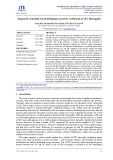
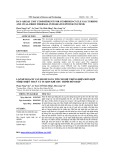
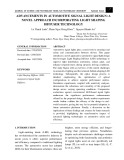
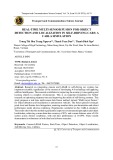
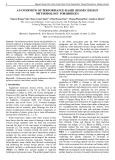
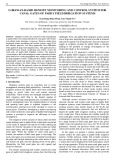

![Bài tập tối ưu trong gia công cắt gọt [kèm lời giải chi tiết]](https://cdn.tailieu.vn/images/document/thumbnail/2025/20251129/dinhd8055/135x160/26351764558606.jpg)




